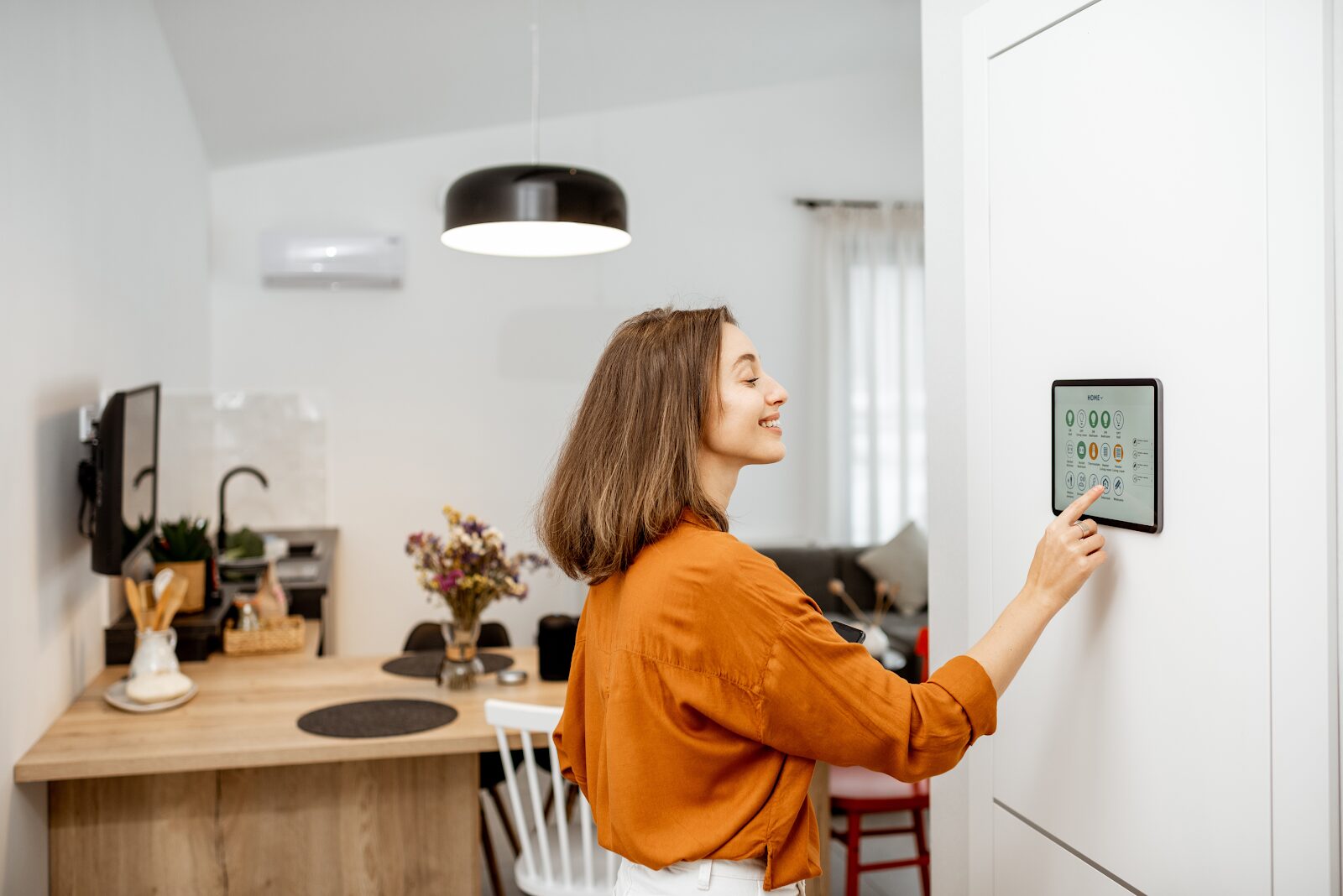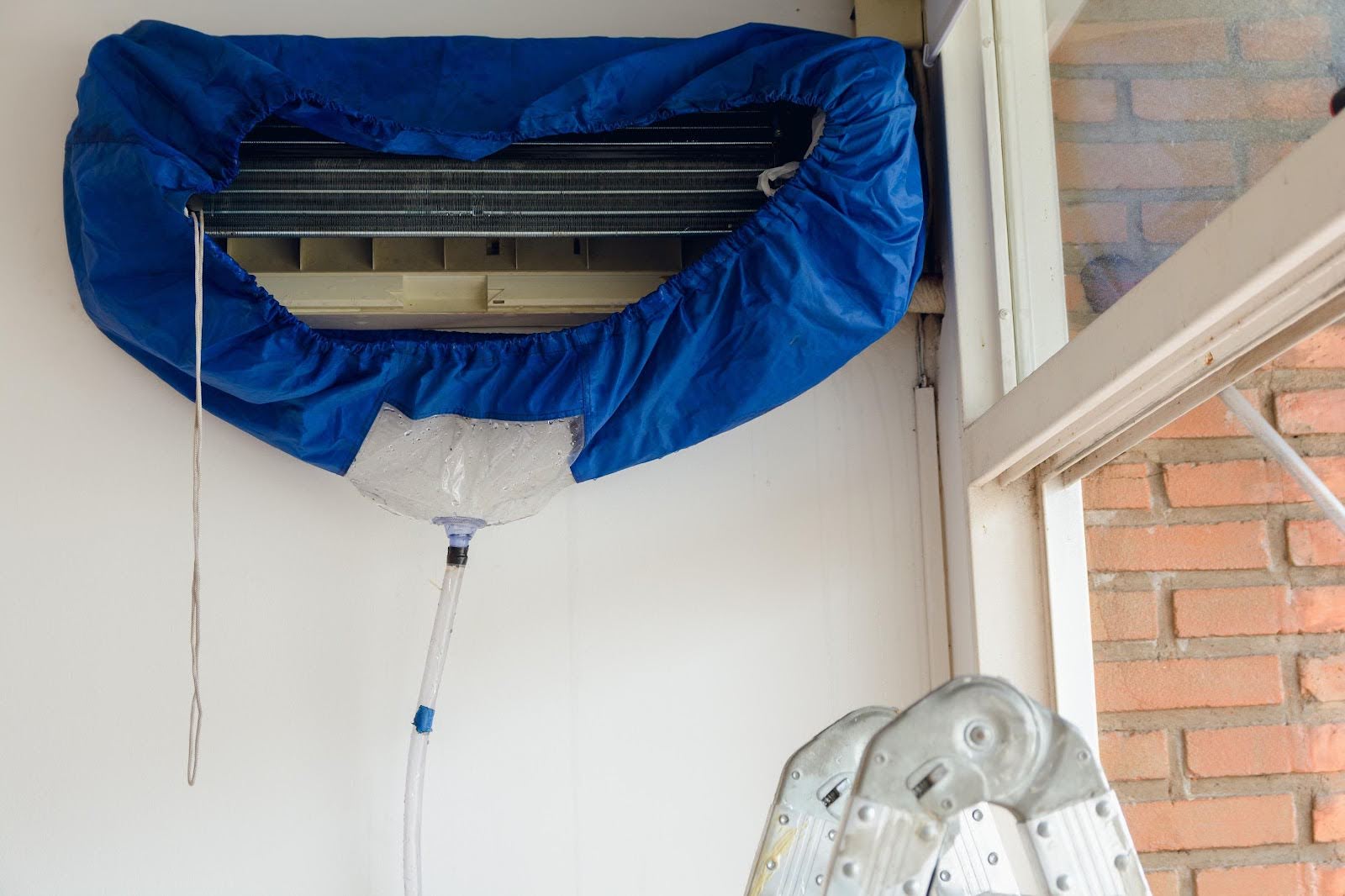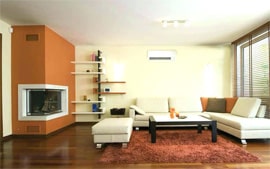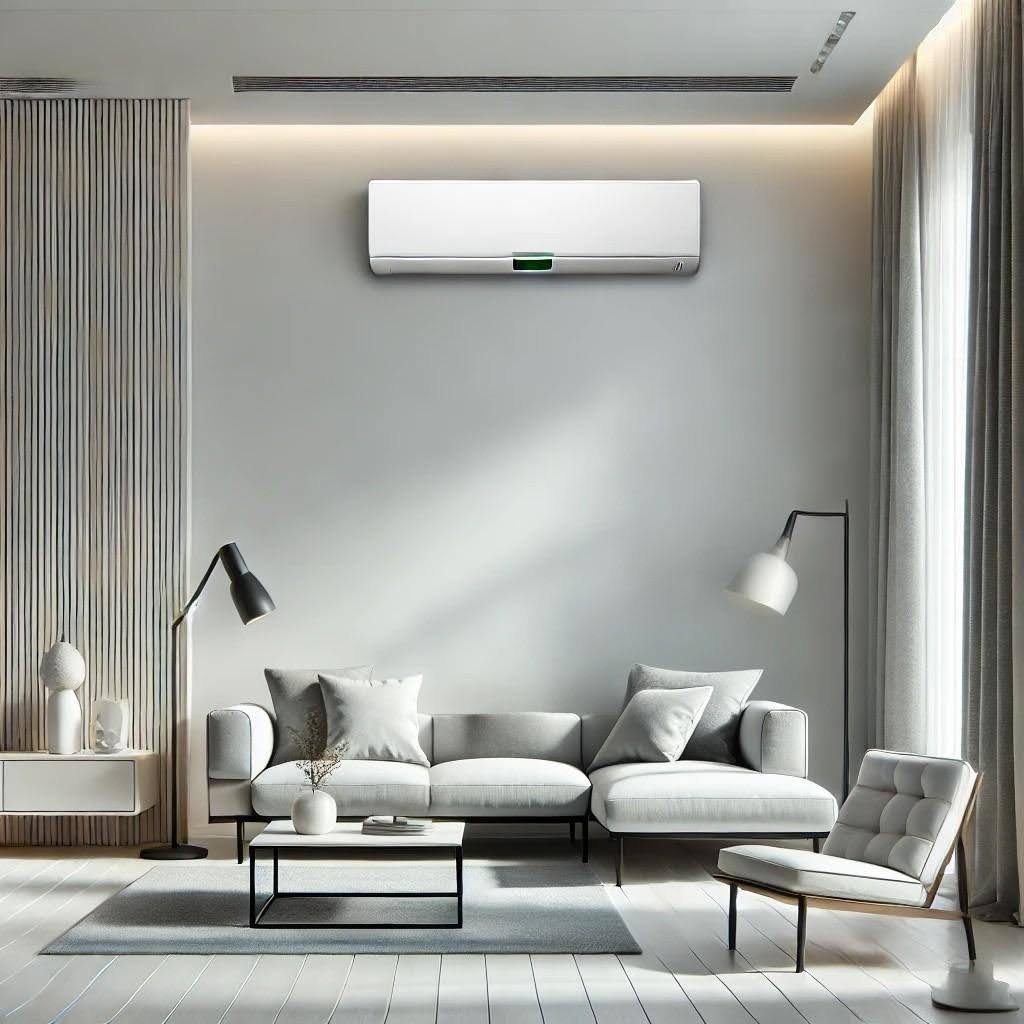No products in the cart.
Connected HVAC systems are transforming the way we manage our homes by linking heating, ventilation, and air conditioning components with smart home technology. Imagine having full control of your home’s temperature right on your smartphone, whether you are relaxing on the couch or away on vacation. This emerging trend is gaining momentum as more and more homeowners look for comfort, energy savings, and the seamless integration of multiple devices. As we move deeper into 2025, these
systems are becoming a focal point in discussions around smart homes, convenience, and sustainability.
Research points to over 77 million US homes using smart devices in 2025, a number that highlights how connected HVAC systems are no longer futuristic novelties but practical innovations for day to day living. Consumers can remotely adjust thermostats, integrate heating and cooling with other smart appliances, and enjoy personalized settings that learn their routines to optimize energy usage. This article aims to unpack every aspect of connected HVAC systems, from the staggering growth figures to the funny mishaps early adopters have faced. We will also explore how these systems save energy, create cost benefits, and why they are at the forefront of the smart home revolution. If you are curious about how this technology might fit into your lifestyle, read on for a deep yet accessible exploration of this exciting development in home comfort, perfect for systems like those at Payless Mini Splits.
A Changing Landscape for Home Comfort
For years, heating and cooling systems functioned largely in the background of daily life, rarely touched by homeowners except to adjust a thermostat when it got too warm or cold. Even programmable thermostats required a bit of manual input and sometimes produced confusion around modes and schedules. As the concept of the smart home took off, innovators began to see the potential of bringing HVAC into the fold, allowing real time data to inform and optimize temperature control. No longer were we limited to guesswork or old fashioned wait and see approaches. Instead, new solutions emerged
that automatically detect when people are home or away, learn daily temperature preferences, and adjust accordingly.
This integration did not happen overnight. Early systems were often pricy and required specialized installation. Many homeowners were hesitant about technology that seemed too futuristic, or worried that they would not know how to use it effectively. However, the steady decline in sensor costs and the growing popularity of smartphones changed all that. Once people got comfortable controlling lights or security cameras from their phones, extending that convenience to HVAC—like the efficient Ductless Mini-Split Systems—became a no-brainer.
Now in 2025, the trend is so established that many new builds include connected HVAC features by default, and retrofit options have become more affordable for existing homes.
Why Connected HVAC Systems Are Taking Over in 2025
Connected HVAC systems aren’t just cool gadgets—they meet real needs for modern homeowners. First, there’s convenience. Ever rushed out the door and forgotten to adjust the thermostat? With a connected system, a quick tap on your phone fixes it—no more nagging doubts. Second, energy savings come from intelligent algorithms that learn your routine. If you’re out from 8 AM to 5 PM, the system cuts back during those hours and ramps up just before you return, trimming utility bills over time—check out Simple Tips to Save on Air Conditioning Costs for more ways to maximize savings.
Third, integration is a game-changer. Picture activating “Away Mode” on your app: lights dim, doors lock, and your HVAC—like a 24,000 BTU Mini-Split—shifts to energy-saving mode, all with one command. With over 77 million US homes using smart devices in 2025, and the HVAC controls market projected to grow from $25 billion to $39 billion by 2030, it’s clear this trend is booming.
Real World Examples That Illustrate the Benefits
It can be easy to talk about data and market trends, but the real power of connected HVAC systems comes to life through anecdotes. Consider Sarah, a busy mom of two who discovered that her teenage kids were constantly fiddling with the thermostat to get just the right level of comfort. When she installed a connected HVAC system, she could monitor temperature adjustments from her phone, putting an end to wild temperature fluctuations. She also used the system’s scheduling feature so it would lower the temperature around bedtime, encouraging everyone to wrap up in cozy blankets, and then gently warm the house a bit before the alarm clocks rang each morning. As a bonus, her monthly heating bill dropped by 15 percent.
Then there is Marcus, a frequent traveler for work who once forgot to switch off his air conditioner before jetting overseas for two weeks. That oversight cost him a small fortune in energy bills. After upgrading to a connected HVAC system, he now routinely checks his home’s temperature from the airport or a hotel room, making real time tweaks if needed. During one trip, Marcus realized he had left the AC running at full blast, so he remotely powered it down, saving himself from another unwelcome surprise on his utility bill. Now, with a smart system—perhaps a 12,000 BTU Ductless Mini-Split—he tweaks settings from anywhere, saving cash and stress.
These stories highlight what a connected HVAC system can do for ordinary people who might never consider themselves tech enthusiasts. It is not about showing off the latest gadget. Rather, it is about smooth integration into daily life. That is why so many homeowners who take the leap rarely go back. Once you have had a taste of being able to customize your home’s climate from anywhere, even if it is just from your living room couch, the old manual thermostat starts to look outdated.
Engaging Anecdotes: The Good and the Amusing
Of course, new technology occasionally brings comical mishaps. One homeowner set her system to bring the temperature down during an intense summer heatwave, only to accidentally activate the wrong routine and start heating the house by mistake. The family returned from a day at the beach to find the living room feeling more like a sauna. Another user discovered that their cat somehow triggered the voice assistant integration, repeatedly telling the HVAC system to change modes, leading to temperature swings that made the family wonder if they were living in the Arctic one moment and the Sahara the next. While these stories produce laughter in hindsight, they also underscore the importance of understanding how to properly configure a connected HVAC system to suit one’s lifestyle.
The potential for humorous moments is part of the charm of any emerging technology. It mirrors the same issues people experienced when smartphone voice assistants first appeared, leading to misunderstandings and funny interactions. The key takeaway is that even when these systems display occasional quirks, the benefits in convenience and energy savings far outweigh the rare glitch. In fact, these anecdotes can serve as cautionary tales that highlight the importance of reviewing your system’s user settings and preferences every so often to ensure there are no unexpected changes.
Pair your connected HVAC with a Ceiling Cassette Mini-Split for sleek design and smart control, but double-check those routines!
The Data Behind the Trend
Market research suggests that connected HVAC systems are poised to become a mainstream component of home design by the end of the decade. Projections show that over 77 million US homes are expected to integrate some form of smart technology in 2025, a substantial portion of which will include connected thermostats and HVAC solutions. As more people discover how these systems can reduce energy usage and enhance comfort, the adoption curve continues to rise.
This surge in interest is reflected in the growth of the HVAC controls market, which is forecasted to expand from about 25 billion US dollars to nearly 39 billion over the next several years. Consumer demand is only one factor. Government incentives and energy efficiency programs also play a big role by encouraging property owners to upgrade outdated systems. Meanwhile, commercial buildings are following a similar path, adopting connected solutions to optimize energy costs and stay aligned with
sustainability targets.
Heating and cooling represent a significant portion of a building’s total energy consumption, sometimes over half of the monthly bill in certain climates. Making this component more intelligent and responsive is a logical step for anyone looking to cut costs or environmental impact. Once a building is equipped with sensors and an internet enabled HVAC, it is much easier to collect data and spot inefficiencies. Building
managers can identify patterns of usage and tweak settings to minimize waste. The same principle applies to homeowners, who can receive monthly or even weekly reports detailing how their system performed and where improvements might be made.
Heating and cooling often eat up over half a home’s energy bill, so smart systems—like those in Multi-Zone Mini-Splits—offer detailed usage reports to spot savings opportunities, benefiting both wallets and the planet.
Overcoming Concerns and Security Considerations
Despite the many advantages, not everyone is quick to jump on the connected HVAC bandwagon. Some consumers worry about privacy and data security, concerned that a system linked to the internet might open the door for potential hackers. While no system is completely immune to cybersecurity threats, the reputable manufacturers of connected HVAC equipment implement robust encryption and security protocols. Many devices routinely receive over the air software updates that patch any vulnerabilities
discovered by security researchers. For extra peace of mind, homeowners can rely on secure Wi Fi networks with strong passwords and limit remote access only to trusted devices.
Another concern is complexity. Some potential users fear that advanced features will be too confusing to operate or that the technology will malfunction if their home internet goes offline. However, modern connected HVAC systems are designed with user friendliness in mind, often featuring intuitive apps and clear step by step guides. Offline contingencies are also common. Even if you lose internet connectivity, the system’s internal logic can continue to manage temperature settings until you regain the ability to
make remote adjustments. Many homeowners find that once they learn the basics, daily interaction becomes second nature.
Start with something simple like Why a Ducctless Mini-Split Might Be Your Home’s New Best Friend to see how easy smart HVAC can be.
Saving Money and the Environment
Energy efficiency is at the heart of the connected HVAC revolution. Heating and cooling can be expensive, and with energy costs rising in some regions, homeowners are eager to trim monthly bills. By intelligently scheduling temperature changes, these systems ensure that you are not paying to heat or cool an empty home. Over time, that can lead to savings that recoup the investment in the hardware. It is not uncommon to hear about families saving hundreds of dollars a year, especially in areas with extreme weather.
Beyond the cost savings, there is an environmental angle to consider. By minimizing unnecessary energy consumption, connected HVAC systems reduce a home’s carbon footprint. This ties into broader sustainability goals, such as local or national initiatives aiming to cut greenhouse gas emissions. While a single household’s reduction may seem modest, the cumulative effect of millions of households doing the same makes a significant impact. In this way, connected HVAC adoption helps align personal financial interests with global ecological benefits.
For anyone hesitant about the upfront cost, there are sometimes rebates or incentives. Many utility providers offer programs to encourage smart thermostat installations, acknowledging the reduced strain on the electrical grid when customers use energy more efficiently. Checking with local energy providers or government websites might reveal discount programs, making the transition more affordable than one might assume.
Curious about efficiency? Explore Air Quality and Efficiency of a Ductless Mini-Split AC for deeper insights.
The Road to Widespread Adoption
The path to widespread adoption of connected HVAC systems has involved tackling several hurdles. Early devices were known to be expensive or difficult to install, requiring professional expertise or even the replacement of existing infrastructure. That created a barrier for budget conscious homeowners. But as with many technologies, improvements in manufacturing processes and increased competition among brands led to lower prices.
Professional HVAC contractors have also become more knowledgeable about connected solutions, making them better equipped to advise clients on appropriate models and features. Meanwhile, user friendly apps have demystified the process, encouraging those who might otherwise be wary of new technology to give it a try. In the early days, owners sometimes complained about complicated instructions and glitchy apps, but those issues have decreased dramatically as big players in the industry
refined their products.
Technology enthusiasts are not the only ones driving this adoption. Real estate developers recognize the appeal of connected HVAC systems and have started integrating them into new housing projects as a selling point. For a potential buyer touring a model home, the mention of controlling the temperature from a phone or seeing real time energy usage can be quite persuasive. This approach creates a cycle
of positive feedback. As more new homes come pre equipped with connected HVAC features, more people experience the benefits firsthand and become less likely to settle for a conventional system in the future.
Potential Pitfalls and Best Practices
Although connected HVAC systems offer plenty of benefits, it is wise to keep a few best practices in mind. First, do your research and read reviews from other homeowners. Brands and product lines vary in quality and feature sets. Some systems might focus heavily on advanced data analytics, which might be overkill for someone simply wanting basic remote control. Others could integrate better with certain smart home ecosystems. Selecting a brand that meshes with your existing devices can make the experience more seamless.
Second, pay attention to updates. Many connected HVAC systems allow for automatic firmware or software upgrades, but you might have to approve them in the app settings. These updates often contain security patches or performance enhancements. By ignoring them, you could miss out on new features or fixes. It is a small step that can greatly improve both safety and functionality over the lifespan of the system.
Third, be aware of potential connectivity issues. If your Wi Fi router is old or your network is prone to frequent drops, you may experience temporary setbacks in controlling your HVAC remotely. It is good practice to have stable internet if you want the best experience. Consider placing the router in a central location or using a mesh Wi Fi system, especially in larger homes. Many connected HVAC devices do not require a huge amount of bandwidth, but they do benefit from a consistent signal.
Fourth, always consider professional installation if you are unsure of your ability to set up the system properly. While some people can handle do it yourself installations, especially when replacing a basic thermostat, more complex HVAC configurations might require a certified technician. This ensures everything is configured safely and correctly, which is crucial for comfort and avoiding costly mistakes down the line.
Looking Ahead to the Future of Connected HVAC
Standing in 2025, it is clear that connected HVAC systems have already made a significant impact on the way homeowners think about comfort and energy use. Yet this is likely just the beginning. As artificial intelligence continues to advance, systems will become even more adept at predicting user preferences and adjusting in real time. We could see sensors that measure indoor air quality and automatically adjust ventilation rates. Or fully integrated environments where your calendar syncs with your HVAC schedule, ensuring that your home is at the perfect temperature before you even step through the door.
There is also the possibility of increased use of geothermal or other renewable energy sources that integrate seamlessly with connected HVAC platforms. A system might switch to solar powered heating on a sunny day or store energy for later use. As more areas adopt time of use pricing for electricity, a connected HVAC system could run extra cooling cycles during cheaper off peak hours, then power down during peak times to save money. In this way, the technology not only learns from your routine, but from
external factors like weather forecasts and utility pricing structures.
From a design perspective, we might see HVAC units that are more visually appealing or compact, freed from the constraints of traditional thermostats. Voice assistants are already common in many households, and integration could become increasingly natural. You might simply say out loud that you are feeling a bit chilly, and the system will gently raise the temperature by a couple of degrees. These changes will be driven by continued consumer demand for convenience, efficiency, and seamless interaction.
Bringing It All Together: A 2025 Snapshot
In 2025, connected HVAC systems have become a cornerstone of modern living for those who want more than just a basic on or off heating and cooling setup. The technology promises convenience, cost savings, and a touch of futuristic flair. With millions of homes already employing some form of smart device control, it is logical that HVAC would be swept into that same current of innovation. Enthusiasm for these
systems is mirrored by market projections that point to staggering growth, reinforcing that this is not a short lived trend but a substantial evolution in how we maintain home comfort.
A typical homeowner in 2025 might wake up to a house that has gently warmed itself in anticipation of the morning routine. Later, the homeowner leaves for work, confident that the HVAC system will reduce energy usage while nobody is around. Midday, the homeowner might receive a friendly push notification alerting them to an unexpected temperature spike caused by a heatwave, asking if they would like to initiate a cooling cycle. In the evening, the system could coordinate with the home’s lighting and security
system to create a comfortable and inviting environment. This is the new normal, and it keeps getting better with each incremental advancement.
For those seeking a bit of entertainment, there is always the comedic side of adopting new tech, whether it is the system accidentally turning on the heat in the middle of a steamy summer or a curious pet changing the settings through a voice assistant. Yet these mishaps tend to be more amusing than alarming, and they highlight just how far the industry has come in making advanced features accessible to everyday users.
Conclusion
Connected HVAC systems represent a significant shift in the way we think about heating, ventilation, and air conditioning. Instead of viewing these systems as static, tucked away components, we can now see them as interactive partners that adapt and respond to our preferences. The growth statistics are striking, indicating the rising popularity of these solutions among both new homeowners and those seeking to retrofit existing properties. Remote control, smart scheduling, integration with other home systems, and the potential for meaningful energy savings all combine to make connected HVAC an attractive proposition.
As with any technology, there are learning curves and potential hiccups along the way. The importance of security, proper setup, and staying informed about software updates cannot be overstated. However, the consensus among early adopters is that once you experience the conveniences and financial benefits of connected HVAC, you are unlikely to return to a traditional setup. The technology has already proven itself with stories of homeowners saving money, improving comfort, and even enjoying the occasional comedic mishap that makes for a fun anecdote.
Looking beyond 2025, the horizon for connected HVAC systems is bright. Ongoing research and development promise even smarter analytics, deeper integration with renewable energy, and simpler user interfaces. Whether you are a tech enthusiast or a homeowner simply looking to make life a bit easier, connected HVAC systems hold plenty of promise. The revolution in comfort and convenience is here, and it is only gaining speed. With millions of US homes adopting smart devices, it is safe to say that
the connected HVAC concept is no longer a futuristic dream. It is an integral part of modern living, reshaping the way we manage and experience indoor environments. It is a trend that is here to stay, and it is one that is likely to continue evolving in compelling ways for years to come.
If you are on the fence about taking the plunge, the best approach is to do a little research, read reviews, and perhaps talk to friends or neighbors who have already embraced a connected system. Before long, you might find yourself wondering how you ever coped without the ability to adjust your home’s temperature with a quick tap on your smartphone. Like so many other smart home innovations, connected HVAC is fundamentally about making life simpler, more comfortable, and more efficient. With an eye on security and proper configuration, the benefits are truly rewarding. The era of connected HVAC systems has arrived, and for anyone who values cutting edge comfort, it is an exciting time to be a hometown.






